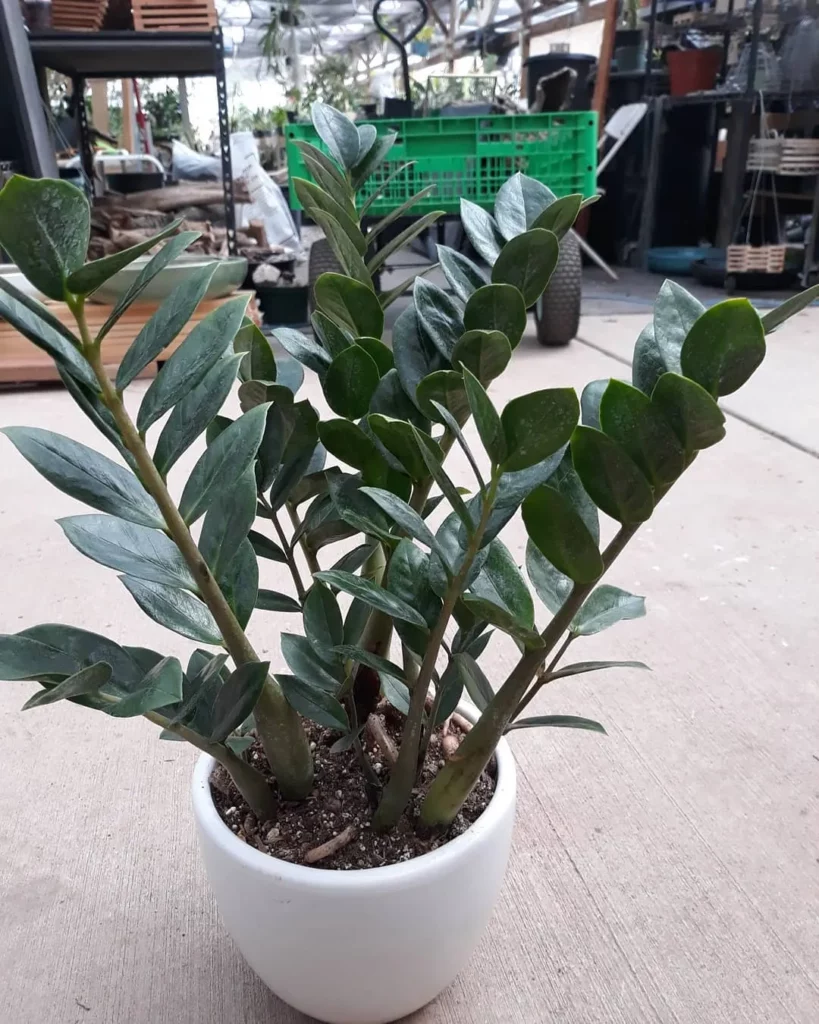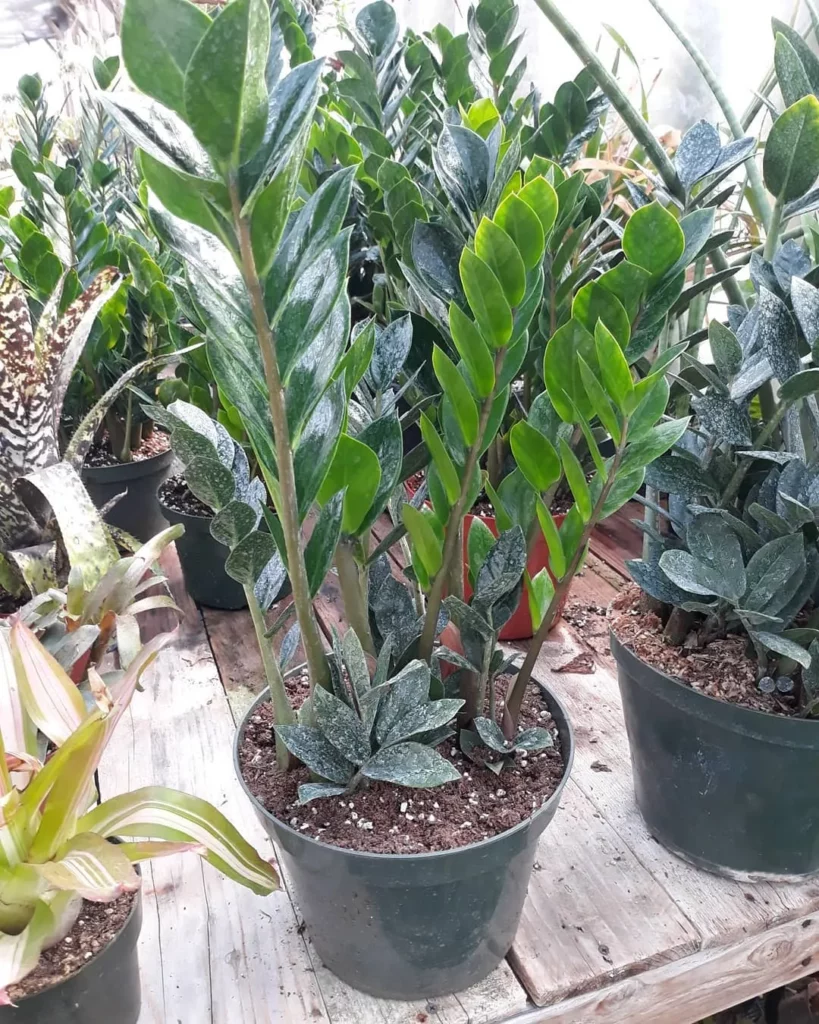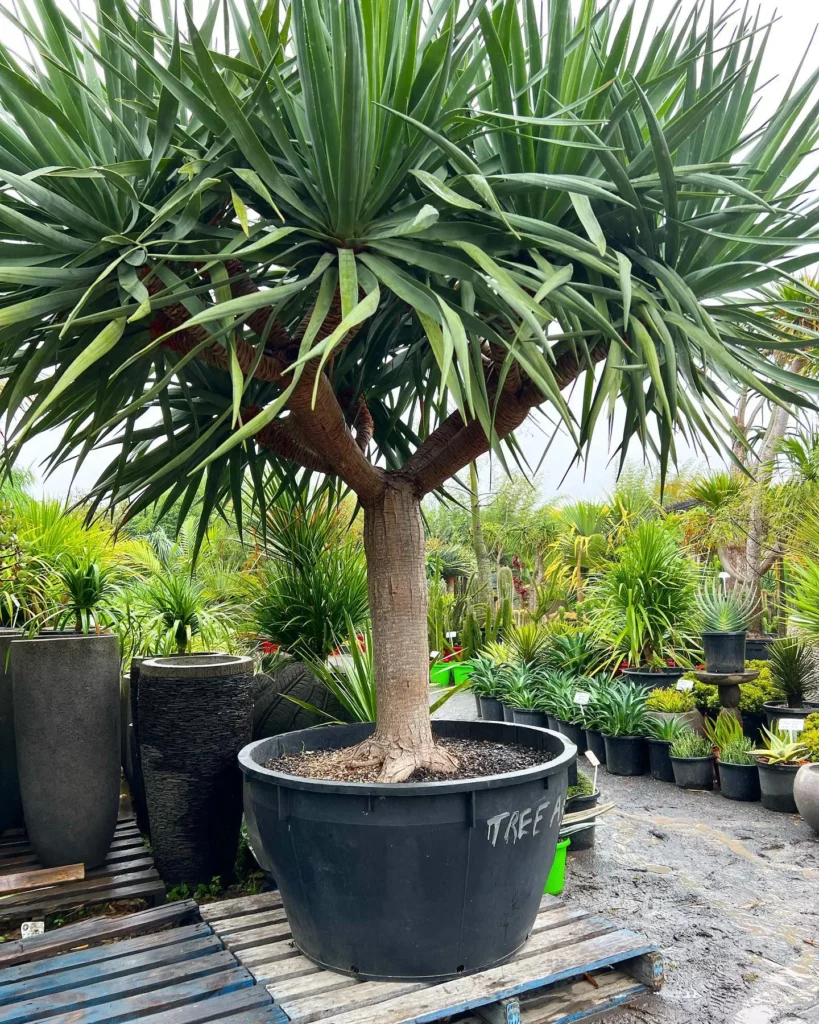These 6 houseplants are have the longevity to last decades in your home. And the best part? They are easy for beginners as they are super resilient and hardy!
Snake Plant (Sansevieria)



When it comes to durable houseplants, few can match the resilience of the snake plant, also known as Sansevieria. With its ability to tolerate low light conditions and minimal watering requirements, the snake plant is a perfect choice for busy or forgetful plant owners.
The snake plant’s scientific name, Sansevieria, is derived from the Italian nobleman Raimondo di Sangro, who was a prince of San Severo.
This ornamental plant has long, sword-shaped leaves with striking variegated patterns that add a touch of elegance to any space. Snake plants are known for their air-purifying properties, making them an excellent choice for enhancing indoor air quality.
One of the most remarkable features of snake plants is their ability to thrive in low light conditions. They can tolerate a wide range of lighting conditions, including dimly lit corners and rooms with only artificial lighting. This makes them ideal for areas in your home where other plants might struggle.
In terms of care, snake plants are incredibly low maintenance. They have succulent-like leaves that store water, allowing them to withstand periods of neglect.
As a result, snake plants only need to be watered sparingly, making them well-suited to those who may not have a green thumb or the time to provide constant care.
ZZ Plant (Zamioculcas zamiifolia)



With its glossy, dark green leaves, the ZZ plant brings an elegant touch to any indoor space. Not only is it aesthetically pleasing, but it’s also incredibly resilient, making it an ideal choice for those who may forget to water their plants regularly or have limited access to natural light.
The ZZ plant, scientifically known as Zamioculcas zamiifolia, is native to Eastern Africa.
It has adapted to survive in low light conditions. Whether you place it in a dimly lit corner or a room with only artificial lighting, the ZZ plant will thrive and maintain its vibrant appearance.
One of the standout features of the ZZ plant is its ability to tolerate irregular watering. Unlike some plants that require a consistent watering schedule, the ZZ plant can withstand periods of drought.
This makes it perfect for individuals with a busy lifestyle or those who may occasionally forget to water their plants.
Benefits of ZZ Plant:
- Thrives in low light conditions
- Tolerates irregular watering
- Adds a touch of elegance with its glossy, dark green leaves
- Low-maintenance and resilient
- Perfect for busy individuals or those with limited access to natural light
Spider Plant (Chlorophytum comosum)



When it comes to versatile and beginner-friendly houseplants, the Spider Plant, scientifically known as Chlorophytum comosum, is a top choice. With its unique arching foliage and air-purifying qualities, this plant is both aesthetically pleasing and beneficial for your indoor environment.
One of the spider plant’s most distinctive features is its ability to produce “spiderettes” or baby plants that hang down from long stems.
These spiderettes can be easily propagated by planting them in new pots or by suspending them in water until they develop roots. This makes the spider plant an excellent option for plant enthusiasts looking to expand their collection or share the joy of gardening with friends and family.
Another advantage of the spider plant is its adaptability to a wide range of lighting conditions. It can thrive in bright, indirect light as well as low-light areas, making it suitable for various rooms in your home.
It is also tolerant of different watering habits, allowing you some flexibility in your plant care routine.
Pothos (Epipremnum aureum)



Pothos can last decades in your home! It is a popular houseplant with its stunning trailing vines and vibrant, heart-shaped leaves.
One of the greatest advantages of owning a pothos plant is its forgiving nature. It can withstand neglect and thrive in low light environments, making it an ideal choice for busy individuals or those who may not have a green thumb. Even if you forget to water it occasionally, the pothos will continue to flourish.
Another appealing aspect of pothos is its versatility. It can be grown as a hanging plant, cascading gracefully from a hanging basket or placed on a shelf to provide a natural touch. It can also be trained to climb a moss pole or trellis, creating a stunning visual display.
Pothos also helps purify the air by removing toxins such as formaldehyde and benzene. Its lush foliage not only enhances indoor aesthetics but also contributes to a healthier living environment.

Peace Lily (Spathiphyllum)
The Peace Lily has stunning white flowers and glossy green leaves which adds a touch of grace to any interior space. Not only does it enhance the aesthetic appeal, but it also improves the air quality by removing toxins like formaldehyde and benzene.
These lovely plants thrive in moderate to low light conditions.
Its leaves can even droop slightly when it’s time for watering, serving as a gentle reminder to provide the care it needs.
Caring for a Peace Lily is easy. They prefer to be kept moist but not overly saturated, so watering once a week is usually sufficient. It’s important to avoid overwatering as this can lead to root rot. To maintain its health, occasional misting to increase humidity is beneficial, especially during dry winter months.
The Peace Lily is a fantastic choice for those who want a beautiful, low-maintenance plant that contributes to improved air quality. Its adaptability to various light conditions and elegant appearance make it a perfect addition to any home or office space.
Chinese Evergreen (Aglaonema)



What sets Chinese evergreen plants apart is their adaptability to different levels of light and humidity. Whether your home has bright, indirect light or lower light conditions, these plants can thrive and bring beauty to any corner.
Chinese evergreen plants are also forgiving when it comes to watering. They can tolerate occasional neglect and can handle periods of drought, making them an ideal choice for those who may not have a green thumb.
One popular variety of Chinese evergreen is the Aglaonema ‘Silver Bay’, which features striking silver-green leaves with bold patterns that make a statement in any room. Another stunning variety is the Aglaonema ‘Red Siam’, with its vibrant red and green leaves adding a pop of color to your space.
To care for your Chinese evergreen plant, place it in well-draining soil and water it when the top inch of soil feels dry. Keep in mind that overwatering can lead to root rot, so it’s best to err on the side of underwatering.
These plants appreciate higher humidity levels, so misting the leaves regularly or placing a tray of water nearby can help create a more favorable environment.

Rubber Plant (Ficus elastica)
The rubber plant is not only visually striking but also incredibly versatile. It can thrive in a variety of lighting conditions, although it prefers bright, indirect light. This makes it a perfect choice for spaces that receive plenty of natural light, such as living rooms or offices near large windows.
One of the reasons why the rubber plant is beloved by many plant enthusiasts is its ability to tolerate infrequent watering.
This makes it ideal for those who may forget to water their plants regularly or have a busy schedule. Simply allow the soil to dry out between waterings and avoid overwatering, as this can lead to root rot.
With proper care, your rubber plant will continue to grow and thrive, adding a touch of tropical beauty to your home for years to come. Its resilient nature and low maintenance requirements make it a popular choice for both beginner and experienced plant owners.
Dragon Tree (Dracaena marginata)



One of the best things about the Dragon Tree is its ability to thrive in low light conditions and will last decades!
In addition to its remarkable adaptability to different lighting conditions, the Dragon Tree is also drought-tolerant. It can withstand periods of neglect and minimal watering, making it an ideal choice for those who may forget to water their plants regularly.
Whether you place it in your living room, office, or bedroom, the Dragon Tree will bring beauty and sophistication to your indoor space. Its resilience and unique appearance make it a must-have houseplant for plant enthusiasts of any level of experience.
Hope you enjoyed this fun article on the 6 houseplants that can last decades – now check out the 71 most common houseplants (perfect to create an indoor jungle)!






Thank you, I love plants